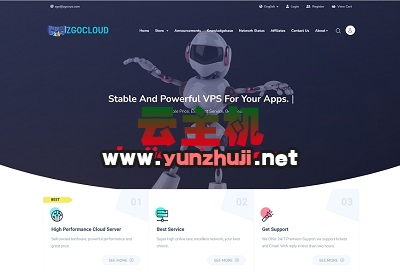在iOS设备上搭建HTTP服务器可以为开发人员提供便利,例如查看和下载应用日志、传输数据等,本文将详细介绍如何在iOS设备上搭建简易的HTTP服务器,并实现简单的GET与POST请求处理。
一、准备工作
1、开发环境:确保安装了最新版本的Xcode,并且熟悉Swift编程语言。
2、第三方库:使用CocoaHTTPServer开源框架,它支持异步socket,IPv4和IPv6,HTTP认证和TLS加密,小巧且易于扩展。
二、搭建HTTP服务器
1. 导入CocoaHTTPServer
需要将CocoaHTTPServer集成到项目中,可以通过CocoaPods来安装:
pod 'CocoaHTTPServer'
然后在项目的Podfile中添加上述内容,并运行pod install命令。
2. 配置HTTP服务器
在项目的AppDelegate或相应的位置初始化HTTP服务器:
import UIKit
import CocoaHTTPServer
@UIApplicationMain
class AppDelegate: UIResponder, UIApplicationDelegate {
var window: UIWindow?
let httpServer = HTTPServer()
func applicationDidFinishLaunching(_ application: UIApplication) {
// Configure our logging framework.
DDLog.add(DDTTYLogger.sharedInstance)
// Initialize our HTTP server
do {
try httpServer.start()
print("HTTP Server started on port (httpServer.port).")
} catch {
DDLog.error("Error starting HTTP Server: (error)")
}
}
} 3. 设置端口和文档根目录
httpServer.port = 8088 // 设置监听端口
let webPath = Bundle.main.resourceURL?.appendingPathComponent("Web").path
httpServer.documentRoot = webPath // 设置文档根目录 注意:在Xcode中拖入文件夹时,选择“Create folder references”以确保外部浏览器可以访问到文件。
三、处理GET与POST请求
为了处理不同类型的HTTP请求,需要创建一个继承自HTTPConnection的类,并重写相关方法。
import CocoaHTTPServer
class MyHTTPConnection: HTTPConnection {
override func supportsMethod(_ method: String, at path: String) -> Bool {
if method == "POST" && path == "/calculate" {
return true
}
return super.supportsMethod(method, at: path)
}
override func expectsRequestBodyFromMethod(_ method: String, at path: String) -> Bool {
return method == "POST"
}
override func httpResponseForMethod(_ method: String, URI: String, isHead: Bool) -> HTTPResponse! {
if URI == "/getIdfa" {
let idfa = ASIdentifierManager.shared().advertisingIdentifier.uuidString
return HTTPDataResponse(data: idfa.data(using: .utf8), mimeType: .text, statusCode: 200, message: "OK")
} else if method == "POST" && URI == "/calculate" {
// 处理POST请求的逻辑
let body = self.bodyString()
print("Received POST data: (body)")
return HTTPDataResponse(data: "Calculation result".data(using: .utf8), mimeType: .text, statusCode: 200, message: "OK")
}
return super.httpResponseForMethod(method, URI: URI, isHead: isHead)
}
} 4. 注册自定义连接类
httpServer.setConnectionClass(MyHTTPConnection.self)
四、启动HTTP服务器
确保在应用启动时调用httpServer.start()方法,并在需要时停止服务器:
httpServer.stop()
五、测试HTTP服务器
启动应用后,可以通过浏览器访问http://<设备IP>:8088来测试服务器,访问http://192.168.1.100:8088/getIdfa应返回设备的IDFA,而发送POST请求到http://192.168.1.100:8088/calculate可以进行计算操作。
六、常见问题解答(FAQs)
Q1: 如何更改HTTP服务器的端口号?
A1: 可以通过设置httpServer.port属性来更改端口号。
httpServer.port = 12345
然后访问时使用新的端口号即可。
Q2: 如何处理跨域请求(CORS)?
A2: CocoaHTTPServer默认不支持CORS,但可以通过重写shouldAllowOrigin方法来实现。
override var shouldAllowOrigin: (String?) -> Bool {
return true // 允许所有域名
} 将此方法添加到自定义的HTTPConnection子类中即可。
通过以上步骤,您可以在iOS设备上成功搭建一个功能齐全的HTTP服务器,并进行基本的GET与POST请求处理,根据实际需求,您可以进一步扩展服务器的功能,如增加更多的路由处理、支持HTTPS等。
到此,以上就是小编对于“ios http服务器搭建”的问题就介绍到这了,希望介绍的几点解答对大家有用,有任何问题和不懂的,欢迎各位朋友在评论区讨论,给我留言。

 云主机测评网
云主机测评网














最新评论
本站CDN与莫名CDN同款、亚太CDN、速度还不错,值得推荐。
感谢推荐我们公司产品、有什么活动会第一时间公布!
我在用这类站群服务器、还可以. 用很多年了。